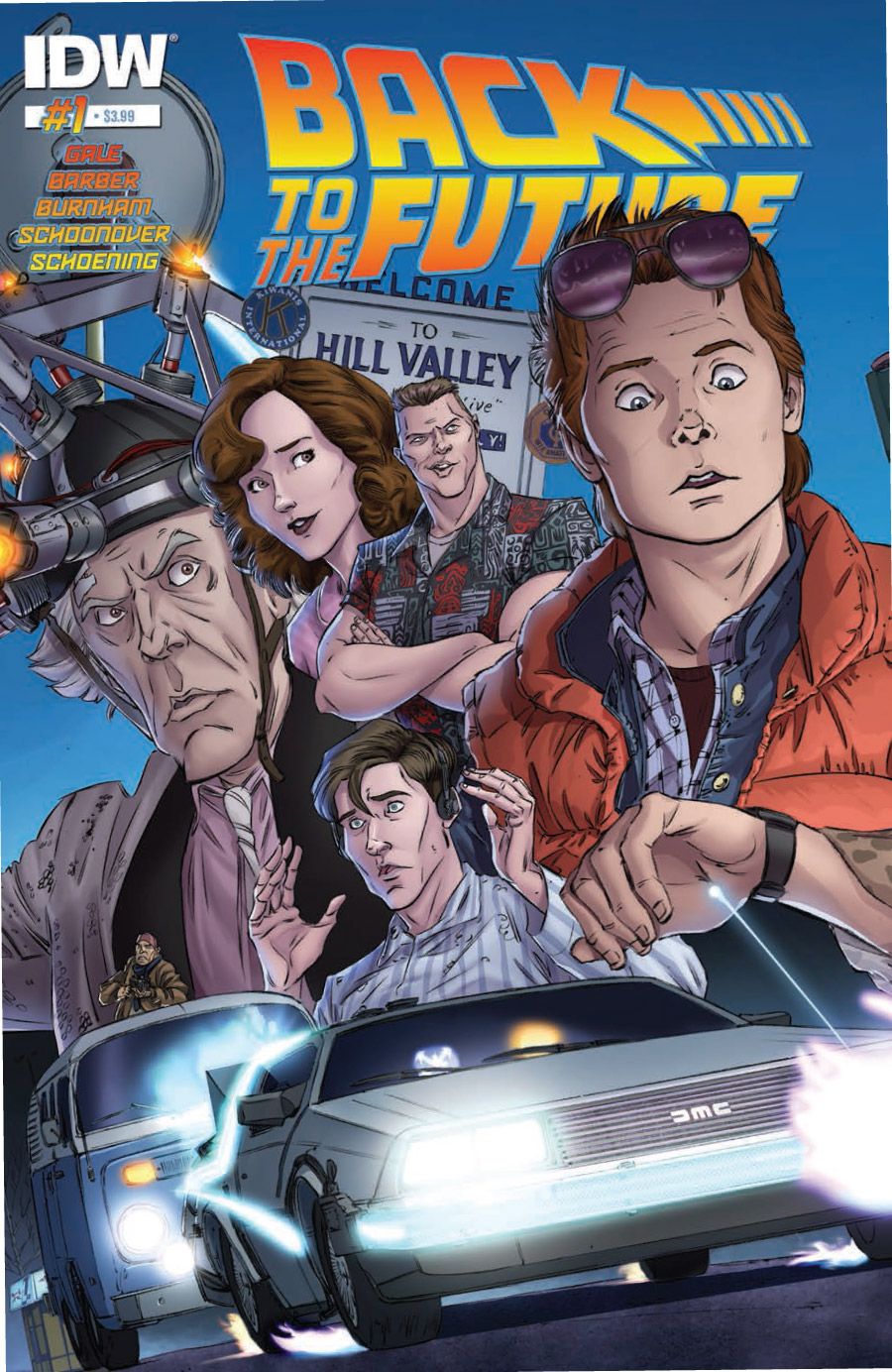It's no "Grays Sports Almanac," but at least "Back to the Future" #1 can be found on shelves this October 21, 2015 (the very same day Marty McFly and Doc Brown arrived from the past in "Back to the Future Part II," as a matter of fact). The film trilogy's screenwriter Bob Gale returns to write this five-issue miniseries and, rather than delve into any new time-traveling adventures, he focuses on the backstory of the two main characters. Lead story "When Marty Met Emmett," co-scripted by Gale and John Barber and drawn by Brent Schoonover, reveals exactly how the aforementioned event occurred, while the backup "Looking For A Few Good Scientists" by Gale, Erik Burnham and Dan Schoening appropriately goes back in time to Doc's younger days.
The first meeting between Doc and Marty is told via Doc's own account to Clara and their two sons, who all reside in the late 19th century. No one knows his own characters like Gale, so his and Barber's take on Doc is refreshingly eccentric, playing right into Christopher Lloyd's interpretation of him. Gale asks nothing from readers other than the safely assumed prerequisite knowledge of the movies, making the story a perfectly natural extension of them. Barber's scrip almost reads like lines lifted from the screenplay, and Schoonover knows how to evoke the characters' likenesses, although he's more faithful to Lloyd's likeness than Michael J. Fox's. Inker Dan Witt puts a heavy finish on Schoonover's pencils, even the panel borders, but it works together and makes the art stand out without excessive detail, which allows Gale's story to move briskly -- not at 88 MPH, but fast enough.
Gale and Barber also employ a lot of the familiar tropes from the movies; it doesn't take long for Needles to call Marty a chicken, for instance, complete with the usual predictable reaction, and Doc's lab is filled with the usual assortment of Rube Goldberg contraptions, some of which were already seen in the movies. Schoonover's usage of the such gags might have seemed derivative or repetitious had this comic been published thirty years ago, but now their inclusion is like a welcome nostalgia trip. Gale and Schoonover don't rely solely on old jokes, though; the history of Doc Brown's estate is an interesting story element on its own, and Marty's curious appraisal of Doc plays perfectly with both characters' personalities but predates the more familiar and closer interactions seen in the films.
The second feature goes back to the past, specifically to an era unseen in the movies: Doc's days as a college professor in 1943. This backup is more finely rendered by artist Dan Schoening, in an almost opposite style to Schoonover and Witt's approach in the previous entry. Here, Doc is shown to be more caricature-like, yet he is clearly more of a scholar than a mad scientist. Curiously, though, Doc's eccentricities are largely referred to rather than shown, which ironically is a key component to the story's plot, but makes Doc seem decidedly more pedestrian. Gale, Burnham and Schoening toss in an amusing single panel gag to wrap up the chapter, as though reminding readers this is still Doc Brown they're reading about, but overall it doesn't quite gel as a Doc story.
"Back to the Future" #1 is a fun romp, although not quite as much fun as a trip in a time-traveling DeLorean. Gale delivers a mostly faithful tribute to the franchise he co-created, one that's both worthy of purchase and far less dangerous to the fabric of the space-time continuum.

